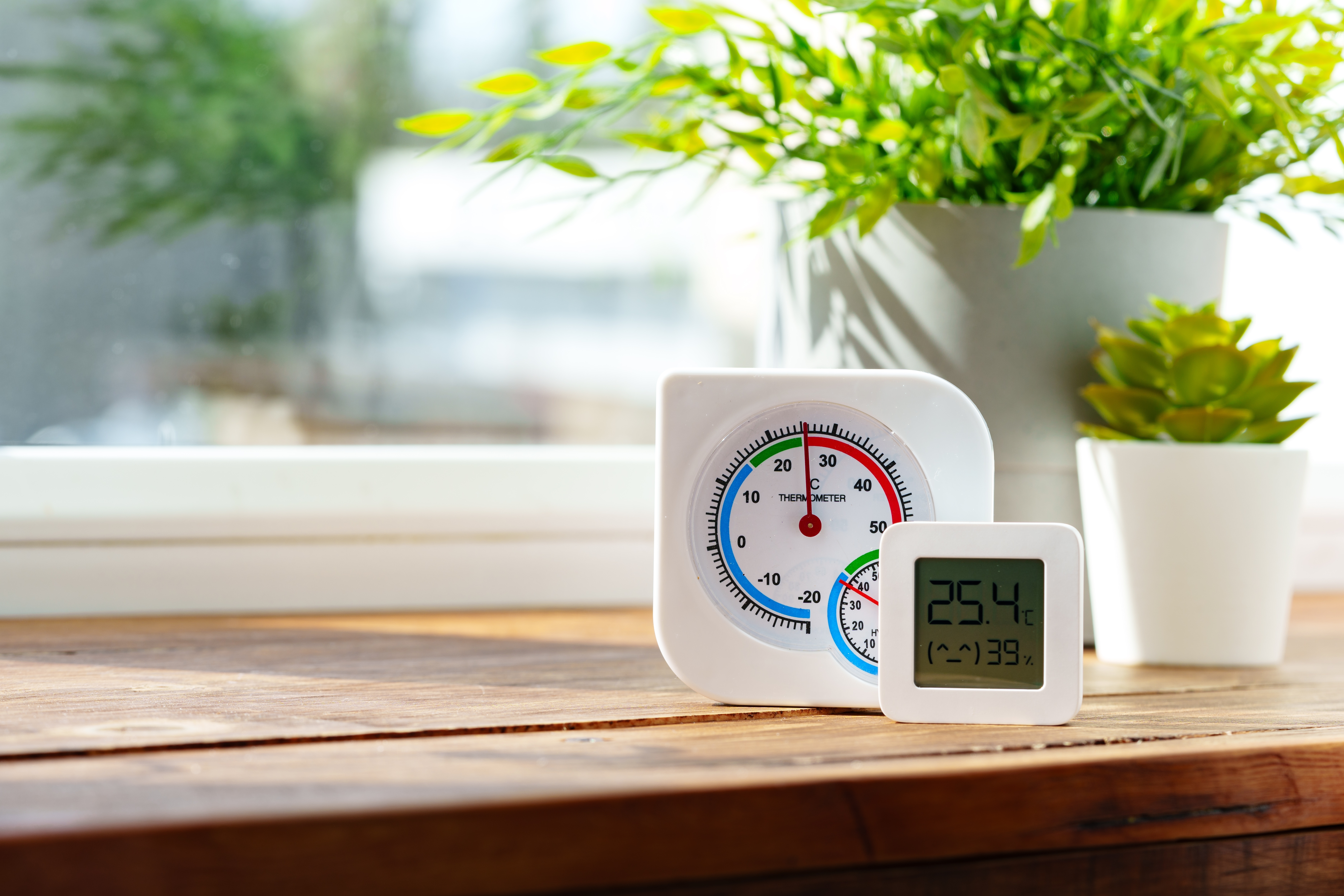We have all heard the saying, “It’s not the heat, it’s the humidity!” The Ottawa Valley is well known more for high humidity than scorching heat. When it comes to air conditioning your home, dealing with air cooling is only part of the comfort equation.
The “feels like” temperature on weather reports is often several degrees higher than the actual temperature, because of humidity. While the air temperature alone might be comfortable, high humidity can make it feel much hotter and more oppressive.
Cooling your home without properly removing that excess moisture can make things worse, leaving your space feeling cool but clammy and uncomfortable. Let’s take a look at how air conditioning controls humidity and what else you can do to reduce humidity levels in your home.
Understanding the Role of Humidity in Home Comfort
Why Humidity Feels Hotter Than Dry Heat
The problem with humid weather is that high water content in the air prevents sweat from evaporating efficiently from your skin. Because evaporation is your body’s natural cooling mechanism, warm, humid air makes it harder to cool down. As a result, you feel hotter than the actual air temperature.
How Humidity Impacts Your Body’s Cooling Process
If your body can’t release heat through sweat evaporation, your internal temperature rises. This can often lead to fatigue, discomfort, and even heat stroke. That’s why dealing with humid summer days in Ottawa usually feels unbearable, even if the thermometer doesn’t show extreme heat.
The Hidden Effects of High Indoor Humidity
- Moisture-related health risks. Excess humidity in your home can promote mould and mildew growth, which, in turn, can lead to allergies, asthma, and other respiratory problems.
- Damage to home structures and furniture. Persistent high humidity levels inside your home can warp wooden floors, damage furniture, peel paint, and cause condensation on windows. Over time, these issues can lead to rot and damage to your home’s structure – an expensive and unpleasant problem to deal with.
- Increased energy bills and an overworked AC. With high humidity, your air conditioner has to work harder to keep you comfortable. As a result, your AC consumes more energy, wears down faster, and leads to high utility bills.
How to Measure and Manage Indoor Humidity

Tools to Track Humidity Levels
A hydrometer is an inexpensive and effective tool to measure indoor humidity. Modern “smart” thermostats can also monitor humidity, allowing you to keep an eye on the humidity levels and make adjustments when necessary.
Ideal Humidity Range for Canadian Homes
Most Canadian homes should have a humidity level between 30% and 50%. This ensures that you feel comfortable while also protecting your furniture and home structure from moisture-related problems.
Practical Tips for Reducing Indoor Humidity
- Use dehumidifiers. Portable dehumidifiers are an effective and affordable way to control humidity levels in damp areas, such as basements. For a whole-house solution, consider investing in a central dehumidifier compatible with your HVAC system.
- Improve ventilation in the kitchen, bathrooms, and basement. Don’t forget to turn on an exhaust fan when showering or cooking. Importantly, ensure that your basement has proper airflow, especially if flooding or seepage is an issue.
- Seal air leaks and improve insulation. Check all windows and doors and seal any cracks you find. Preventing moist outdoor air from entering your home can help improve humidity control inside and increase your home’s energy efficiency.
How Your HVAC System Helps Control Humidity
Air Conditioner Features That Manage Moisture
Air conditioners are not simply cooling units, but are complex mechanical systems that depend on a wide variety of conditions to operate properly. Air conditioners are designed to have a specific amount of refrigerant, known as the “charge”. They are designed to have a specific amount of airflow across the coils, removing a specific amount of heat and humidity. If any of these things change, the system will have problems. It is a fine balance.
- Insufficient airflow can cause the indoor evaporator coil to freeze, while excessive airflow can reduce the system’s ability to remove humidity, leading to decreased cooling performance and energy efficiency.
- If the refrigerant charge is too low, your air conditioner may experience reduced cooling capacity and could even freeze up, potentially leading to system failure.
- When airflow across the outdoor condenser coil is restricted, the unit struggles to dissipate heat, resulting in lower efficiency and reduced cooling output.
In areas like Ottawa, where humidity is typically high, the situation is even more complex. Proper maintenance can avoid most of these issues, but effectively removing humidity depends on the actual system and installation.
Considering Whole-Home Dehumidification Systems
If your air conditioning alone can’t effectively control humidity, you might benefit from a whole-home dehumidifier. Such a system will integrate with your central HVAC to remove excess moisture from the air and ensure consistent humidity control. Unlike portable systems, a whole-home dehumidifier does not require manual operation.
When to Call a Professional for HVAC Upgrades or Maintenance
If you notice signs of high humidity, including persistent condensation or mould, don’t delay reaching out for professional help from Top Hat Home Comfort Services. Our HVAC specialist will conduct an inspection and perform necessary maintenance to ensure your air conditioner continues to reduce humidity effectively, or install a central dehumidification system if necessary. With our support and proper HVAC setup, you can beat Ottawa’s summer humidity and enjoy a comfortable, dry indoor environment all year long.







